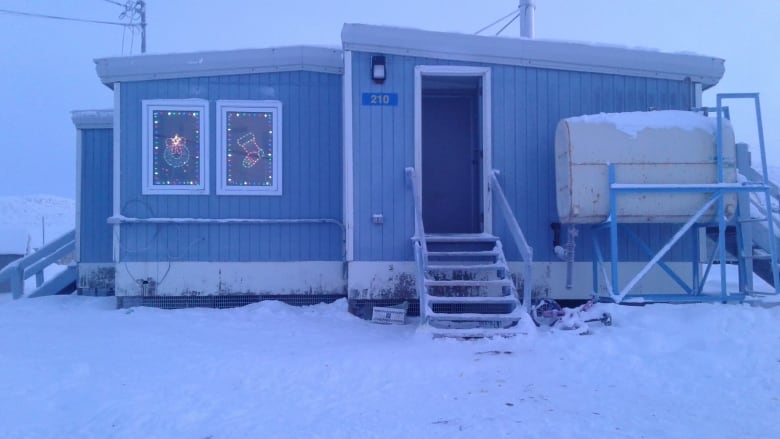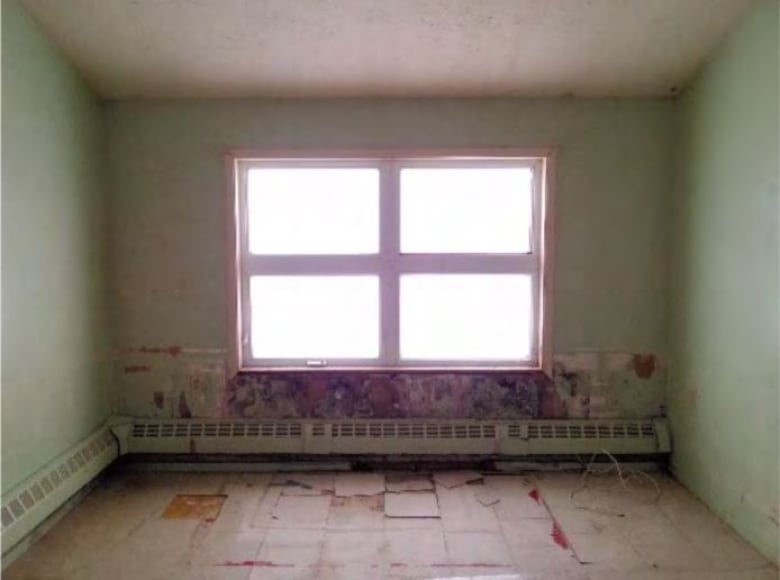Housing crisis in Canada’s east-Arctic worsens as homes become too old to live in

Residents are demanding repairs as Nunavut’s public housing stock ages, but the government says that budget constraints means people shouldn’t hold their breath for change in the short-term.
Nearly half the Canadian east-Arctic territory’s public housing is more than 30 years old. After 40 years, they should be replaced, according to Stephen Hooey, chief operating officer of Nunavut’s housing corporation — but most older units are still in use.
“Even if it is old and it’s approaching its end of life, it’s very, very hard for us to take those [houses] out of service because we don’t have enough housing to provide the families,” he said.
The territory is short 3,000 much-needed public housing units and that number doesn’t account for its growing population.
In a few years, it will need more units.
Many Nunavummiut live in overcrowded homes. Even though the federal government has earmarked money, at the current rate houses are being built, it will be decades before today’s needs are met, according to the housing corporation.
Hooey said the housing corporation spends about $25,000 a year on utilities and maintenance per unit it manages. About $6,000 goes to repairs and routine upkeep.
The territorial government spends 13 per cent of its budget on housing operation and maintenance. It doesn’t want to increase that amount, said Hooey, because it would mean less money for building new housing.
Instead, the corporation is reviewing each unit to get a sense of what repairs are needed, and will prioritize upgrades based on the review.
But that approach is leaving families in older units empty handed — and that’s not good enough, according to Rankin Inlet’s Lawreen Subgut.
“I just want them to try harder for everything,” she said. “The housing corporation needs to wake up.”
‘The wind comes in through our window’
Subgut lives in a home built in the 1980s with her partner and five children. The house has numerous problems, she said, including a significant amount of mould and issues with the integrity of the windows.
“When the wind is coming from the north, the wind comes in through our window,” she said, explaining that there’s a big gap in her back porch. “[It] gets really cold.”
Subgut said she’s asked for renovations, but hasn’t had any luck so far.
“There is mould under the sink, mould under the fridge, mould in the vent, on top of the bathroom door. And we can really smell that when we are walking by it,” she said.

In Qikiqtarjuaq, Nunavut, Sarah Kokseak has the same problem. She lives with five other people in a unit that was built in the 1960s.
“The smell of mould is always there, when it’s warm outside and when it’s winter. Those are the worst times,” Kokseak said.
Last year, the walls were replaced but that didn’t make a difference, she said.
Kokseak said she’s asked for a new house, and there are five new units slated to be built in Qikiqtarjuaq this year. But there are 44 people on the local waitlist, so she’s not likely to get one.
Staff shortage slowing repairs
It’s up to the local housing organizations in each community to manage repairs, but Hooey said he’s aware of problems some tenants might have getting the repairs they need.
Some local housing authorities are too short-staffed to do repairs and can’t do the more complicated ones, so they need to hire contractors, which can lead to difficulties with cost, said Hooey.
He said local organizations spend a lot of time replacing windows, and he’s hopeful the territory will see some new money for repairs through the Canada Mortgage and Housing Corporation.
Hooey said the money is not specifically for “livability conditions,” but could go towards window and door upgrades to improve energy efficiency.
He said with an additional budget and a better understanding of the realities of peoples’ housing, the government would be able to provide “enhanced maintenance.”
However, the repairs take a toll on the homes as well, he said — and no matter the amount of renovations, the houses won’t last forever.
“If the flooring has been re-done a couple of times, what sometimes happens is as the layers go up on the flooring … your ceiling height comes down,” he said. “They become less nice to live in.”
With files from Kieran Oudshoorn
Related stories from around the North:
Canada: Access to affordable housing a challenge in Northern Canadian cities, CBC News
Finland: Report highlights Finland’s top 5 housing problems, YLE News
Russia: Abandoned Russian airbase to become wealthy residential neighborhood, Photo report by The Independent Barents Observer
Sweden: Small town hopes to reverse depopulation trend affecting rural and Northern Sweden, Radio Sweden



